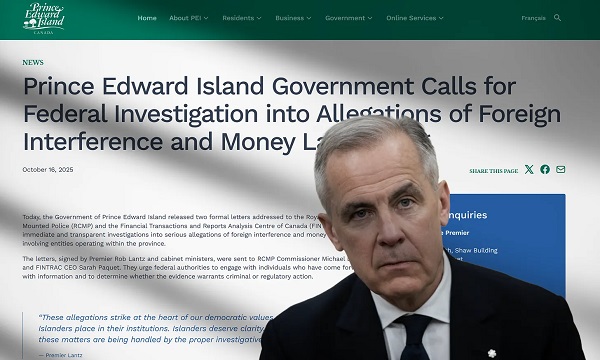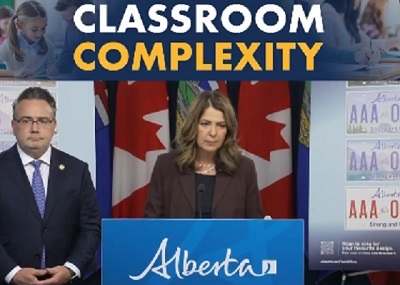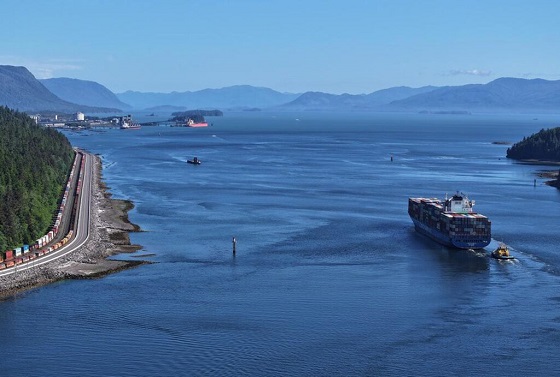Alberta
Access to tidewater focus of fiscal update

As Alberta’s deficit continues to drop, new economic headwinds pose a potential challenge for the province’s recovering economy if left unchecked.
Compared to last year, 42,000 new jobs were created in the province. Average weekly earnings remain strong and manufacturing sales are up 8.5 per cent.
The deficit has dropped by $1.3 billion since Budget 2018 with the $500 million risk adjustment remaining in place to protect against price volatility. As a result, our government remains on track to balance the budget as planned in 2023.
However this recovery faces a serious threat from the differential. Inadequate pipeline capacity and inaction by the federal government on crude by rail has led to a widening differential. The decline in the price of Western Canadian Select (WCS) over the past months has weighed on Alberta’s economic outlook.
“The Alberta economy continues its second year of recovery with 42,000 jobs created. The deficit continues its decline and we are on track to balance in 2023-24. But our recovery is at risk due to the punishing differential. This is a crisis. Albertans and working Canadians cannot afford to leave $80 million on the table every day. It doesn’t make sense and, if the differential is not addressed, our entire country could be plunged into a downturn. This is a national issue and it’s time Ottawa stepped up and pitched in.”
Fighting to get full value for Alberta oil
The Canadian economy is losing more than $80 million a day due to the differential. The Government of Alberta is committed to achieving market access and getting full value for Alberta oil.
“We’re fighting for the Albertans who are struggling because of the punishing differential. We’re going to keep pressing the federal government. And if they won’t act, we will.”
2018-19 Second quarter forecast ($ millions)
Full-year forecast |
Budget 2018 |
Q2 forecast |
Change from Budget |
| Income taxes |
15,938 |
16,318 |
380 |
| Non-renewable resource revenue |
3,829 |
5,322 |
1,493 |
| Other revenue |
28,113 |
27,965 |
(148) |
Total revenue |
47,879 |
49,605 |
1,726 |
| Operating expense (excluding CLP) |
47,765 |
47,886 |
121 |
| Climate Leadership Plan operating expense |
1,035 |
1,029 |
(6) |
| Disaster/emergency assistance expense |
206 |
459 |
253 |
| Other expense |
7,175 |
7,243 |
68 |
Total expense |
56,181 |
56,617 |
436 |
| Risk adjustment |
(500) |
(500) |
– |
Deficit |
(8,802) |
(7,512) |
1,290 |
Energy and economic assumptions |
Budget 2018 |
Q2 forecast |
Change from Budget |
| WTI (US$/bbl) |
59.00 |
64.00 |
5.00 |
| Exchange rate (US¢/Cdn$) |
80.0 |
77.50 |
(2.5) |
| Real GDP growth (%) |
2.7 |
2.5 |
(0.2) |
Alberta
Diploma Exams Affected: No school Monday as ATA rejects offer of enhanced mediation

Premier Danielle Smith, Minister of Finance Nate Horner, and Minister of Education Demetrios Nicolaides issued the following statement.
“Yesterday, the Provincial Bargaining and Compensation Office wrote to the Alberta Teachers’ Association (ATA) and formally requested an agreement to enter an enhanced mediation process.
“This process would have ensured that students returned to the classrooms on Monday, and that teachers returned to work.
“Negotiating would have continued with the ATA, Teachers’ Employer Bargaining Association (TEBA) and a third-party mediator to propose a recommended agreement.
“We are very disappointed that the Alberta Teachers’ Association refused this offer. Teachers and students should also be disappointed.
“PBCO made this offer to the ATA because the union has not made a reasonable offer and this strike is impacting students. Alberta’s government is trying to put kids first and bring an end to this strike.
“The offer of enhanced mediation provided a clear path to ending it.
“We want the same things as the ATA: More teachers. More pay for teachers. More educational assistants. And more classrooms.
“This strike has gone on too long and we are extremely concerned about the impact it is having on students.
“We are willing to consider further options to ensure that our next generation gets the world-class education they deserve. After about three weeks, a strike of this nature would reach the threshold of causing irreparable harm to our students’ education.
“The ATA needs to do what is right for its members, and for all Alberta students.
“If it refuses to do so, we will consider further options to bring this strike to an end.”
Diploma exam update
November diploma exams will be optional for students.
With instructional time in schools disrupted due to the teacher strike, the November 2025 diploma exams will now be optional for students. Students who wish to write a diploma exam may request to do so, and their school boards will accommodate the request.
The optional diploma exams apply to all schools provincewide. These exams will still take place on the currently scheduled dates.
Students who choose not to write the November diploma exams can still complete their courses and graduate on time. Their final grade will be based entirely on the school-awarded mark provided by their teacher.
Choosing not to write the November diploma exams will not affect a student’s ability to apply to, be accepted by, or attend post-secondary institutions after graduation.
No changes have been made to the January and June diplomas and provincial achievement tests.
Quick facts
- Students are automatically exempted from writing the November diploma exams but can request to write them.
- School boards must allow the student to write the diploma exam if requested.
Alberta
Alberta taxpayers should know how much their municipal governments spend

From the Fraser Institute
By Tegan Hill and Austin Thompson
Next week, voters across Alberta will go to the polls to elect their local governments. Of course, while the issues vary depending on the city, town or district, all municipal governments spend taxpayer money.
And according to a recent study, Grande Prairie County and Red Deer County were among Alberta’s highest-spending municipalities (on a per-person basis) in 2023 (the latest year of comparable data). Kara Westerlund, president of the Rural Municipalities of Alberta, said that’s no surprise—arguing that it’s expensive to serve a small number of residents spread over large areas.
That challenge is real. In rural areas, fewer people share the cost of roads, parks and emergency services. But high spending isn’t inevitable. Some rural municipalities managed to spend far less, demonstrating that local choices about what services to provide, and how to deliver them, matter.
Consider the contrast in spending levels among rural counties. In 2023, Grande Prairie County and Red Deer County spent $5,413 and $4,619 per person, respectively. Foothills County, by comparison, spent just $2,570 per person. All three counties have relatively low population densities (fewer than seven residents per square kilometre) yet their per-person spending varies widely. (In case you’re wondering, Calgary spent $3,144 and Edmonton spent $3,241.)
Some of that variation reflects differences in the cost of similar services. For example, all three counties provide fire protection but in 2023 this service cost $56.95 per person in Grande Prairie County, $38.51 in Red Deer County and $10.32 in Foothills County. Other spending differences reflect not just how much is spent, but whether a service is offered at all. For instance, in 2023 Grande Prairie County recorded $46,283 in daycare spending, while Red Deer County and Foothills County had none.
Put simply, population density alone simply doesn’t explain why some municipalities spend more than others. Much depends on the choices municipal governments make and how efficiently they deliver services.
Westerlund also dismissed comparisons showing that some counties spend more per person than nearby towns and cities, calling them “apples to oranges.” It’s true that rural municipalities and cities differ—but that doesn’t make comparisons meaningless. After all, whether apples are a good deal depends on the price of other fruit, and a savvy shopper might switch to oranges if they offer better value. In the same way, comparing municipal spending—across all types of communities—helps Albertans judge whether they get good value for their tax dollars.
Every municipality offers a different mix of services and those choices come with different price tags. Consider three nearby municipalities: in 2023, Rockyview County spent $3,419 per person, Calgary spent $3,144 and Airdrie spent $2,187. These differences reflect real trade-offs in the scope, quality and cost of local services. Albertans should decide for themselves which mix of local services best suits their needs—but they can’t do that without clear data on what those services actually cost.
A big municipal tax bill isn’t an inevitable consequence of rural living. How much gets spent in each Alberta municipality depends greatly on the choices made by the mayors, reeves and councillors Albertans will elect next week. And for Albertans to determine whether or not they get good value for their local tax dollars, they must know how much their municipality is spending.
-

 Red Deer16 hours ago
Red Deer16 hours agoThe City of Red Deer’s Financial Troubles: Here Are The Candidates I Am Voting For And Why.
-

 Business1 day ago
Business1 day agoCutting Red Tape Could Help Solve Canada’s Doctor Crisis
-

 espionage19 hours ago
espionage19 hours agoPEI to Ottawa: Investigate CCP Footprints—Now
-

 Alberta2 days ago
Alberta2 days agoAlberta taxpayers should know how much their municipal governments spend
-

 Alberta2 days ago
Alberta2 days agoPremier Smith addresses the most important issue facing Alberta teachers: Classroom Complexity
-

 Bruce Dowbiggin1 day ago
Bruce Dowbiggin1 day agoBrokeback President: We Can’t Quit You, Donald
-

 Energy1 day ago
Energy1 day agoPrince Rupert as the Optimal Destination Port for an Alberta Crude Oil Pipeline –
-

 Business17 hours ago
Business17 hours agoFederal Budget 2025: A responsible media would ensure Canadians know about the dismal state of federal finance






